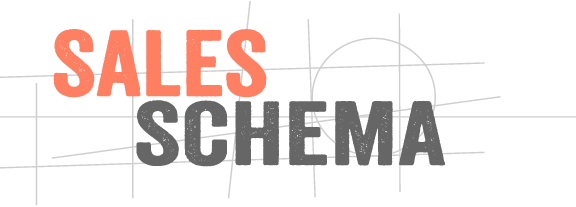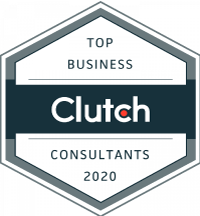Podcast: Play in new window | Download
Subscribe: RSS
This is first in a continuing series of posts and podcast episodes referencing concepts from our new comprehensive online course – The Agency Lead Generation Course. If you’d like to get updates on the next open enrollment period, sign-up here.
If there is a silver lining to quarantines, lockdowns, and so on, it’s that all of this might just free up space for agencies to take a step back, think more deeply about the problems they’re solving, and innovate.
“Innovate” is such a highfalutin word that sometimes we feel silly using it for everyday process improvements in a service business – we leave the term for Silicon Valley and various “disruptors”. But innovate is what we’re doing, and we should all give ourselves more credit.
Here at Sales Schema, if I had to sum up “our year in innovation”, in our weird little world of agency-focused outreach and appointment-setting, I’d describe it by way of simplification and semi-automation.
In this post, I’ll cover what I mean and hopefully there will be at least one or two things that you can bring into your agency to plug more deals into the pipeline.
There are a couple of over-arching approaches to outreach and appointment-setting – both are viable and each have pros and cons.
Approach A. The Flashlight.

From 2014 through the beginning of 2020, 80% of our campaigns that focus on selling agencies to marketing decision-makers at brands looked something like this:
- Many verticals (“Clusters” in our parlance).
- Many distinct copy templates.
- High volume of sends across multiple channels.
- Relatively high degree of automation.
- Location of The Work: back-end / optimization.
- Pros: when it works it REALLY works – you get a lot of meetings.
- Cons: hard to get started, and this…
The Flashlight stopped working in most cases.
This played out with a decline in response and meeting rates, and I can’t tell you how many times we heard, “We used to do outreach and then it stopped working, and we have no idea why.”
We heard this from agencies as well as colleagues in the wider world of B2B sales.
At face value, there are boring technical reasons for a decline in this numbers game approach – email filters at Google and Microsoft improving and so on; in other words, par for the course.
But the bigger picture, as always, is more interesting.
Why Automation is Over-Valued in B2B Sales (Especially Now)
As the entire world shifted to digital and drove into the limited number of thoroughfares like LinkedIn, email, and FB/Instagram, the competition for attention skyrocketed.
Obviously this trend is old news, but the treadmill just got turned up to eleven.
Across the board, we’re hearing, “We used to go to tradeshows (or host events, or take people out to lunch, or whatever) and we can’t do that anymore, so now we have to figure out digital.”
This dynamic is playing out across the entire economy.
So with fierce competition for attention, ‘numbers game thinking’ doesn’t cut it, and automation often means tripping over dollars to pick up pennies.
Although the robots, VA’s, and fancy processes have their place, they have to be used a lot more strategically because we all demand a higher level of conscientiousness from those who don’t know us but would like to.
Enter the buzzword “personalization” – in this case, the word is worth the buzz.
Now you might feel a knot forming in your stomach…
You’re thinking, “Dan, I’m running an agency and dealing with a million things at once, and now you’re telling me I need to write custom love letters to my prospects, or stand outside their homes blasting a boombox, like John Cusack in Say Anything?”
Sort of, and I’m generally not a fan of the Cusack approach unless you’re spinning Duran Duran.
The good news is that while the new process won’t require less work, it might not require more either.
That’s because personalization can be a lot simpler and more straightforward than automation.
With this new approach, we are helping agencies get deliberate about who’s a good client, and then we are simply sending the right words to the right people.
Approach B. The Laser Pointer (i.e. where we’re shifting things)

From a high-level, here’s what it looks like:
- One well-targeted vertical at a time.
- One or two customizable, Mad Lib-style email templates.
- Low volume of sends across multiple channels.
- Relatively low degree of automation.
- Location of The Work: front-end setup and list-building.
- Pros: easy to get started and more effective now.
- Cons (really more of a challenge to overcome): requires focus and specificity.
This process is much cleaner and more effective than the alternatives, but it means that our agency clients need to have their buyer profile basically tattooed on the backs of their hands – no one else can figure this out for them.
Specialization is important – it doesn’t have to mean niching, but most campaigns need to be verticalized in some way.
As for Where the The Work Lives, and this is applicable beyond sales and lead generation – it’s not about blindly reducing work wherever you can, or haphazardly enlisting robots or virtual assistants. Instead, it’s about placing your team’s labor at the highest-leverage stages of the process, where it’s likely to produce the greatest results, just a like a lever on a fulcrum.
One great example of the Laser Pointer Approach is that our team is now spending a lot more time collaborating on lists and data with our clients, then enriching this data with custom fields and areas we can reference in outreach, before launching campaigns.
We’re getting a lot more focused and curated so that we know we have a good prospect before we invest in research, data enrichment, and eventually automating the process once we know we have a strong foundation.
This front-end setup work does NOT mean perfection – you still need to launch campaigns ASAP so you can see how your market responds and optimize, but it does mean 20-50% more preparation.
Bigger than all of this, the Laser Pointer Approach is one that busy agency owners and salespeople can use to bring in a new river of market intelligence.
List building is an exercise with constraints, and it’s benefits are huge. It forces you to decide who will be a good client and who won’t, and then you have to figure out what you should say about THEM (not you or your portfolio).
List building can be tedious at first, but our students in our course and training programs often tell us it’s one of the most enlightening research exercises they’ve conducted in years.
With that, I’d love to hear how you’re innovating in your agency, however small – let me know in the comments.






